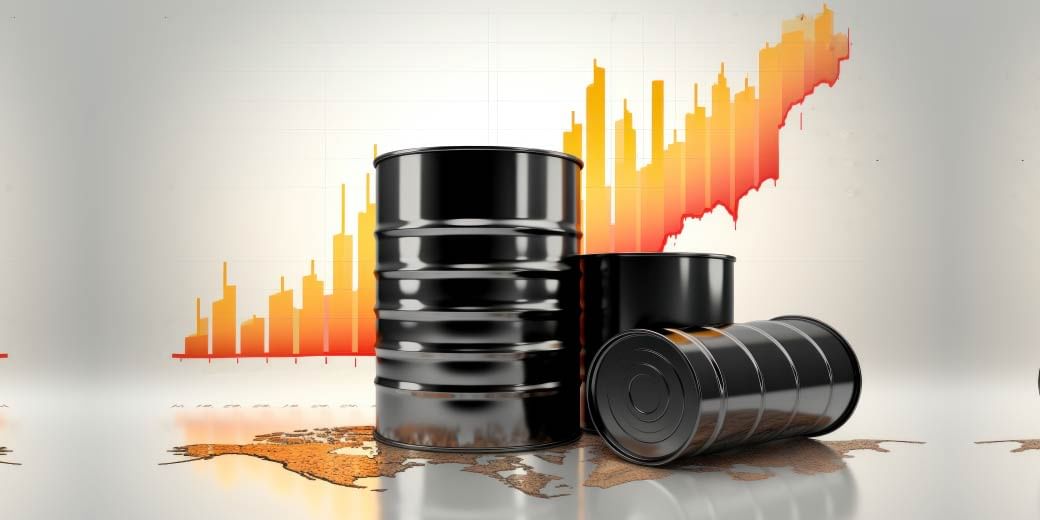Where are investment opportunities in oil-gas sector?
Crude oil becoming expensive means India's import bill will increase because the more expensive the crude, the more dollars India will have to spend. What is the outlook for crude oil prices? Will it affect any company in the oil-gas sector? Is there also an opportunity to invest in this sector?
- Shivram Krishnan
- Last Updated : October 25, 2023, 20:00 IST

India imports around 85% of its crude oil needs. Every year billions of dollars are spent on it. Higher crude oil prices imply an increase in import bill for India. The higher the price higher the dollar expenditure.
If higher crude oil prices are coupled with a fall in currency, then the import bill of the country increases further. At the same time, it also increases inflation because higher crude oil prices imply more expensive petrol-diesel. This leads to an increase in inflation. In such case it is very important to know about the outlook on crude oil prices. Also, will it create investment opportunities in the oil&gas sector. Just in a week after Israel – Hamas war, brent crude went past $91 per barrel which was below $85 on 6th October.
The rise in crude prices caught momentum in mid-June, when it was trading below 72 dollars per barrel. In the next 3 months, Brent crude shot up to 97 dollars per barrel, touching a 10-month high. In the first week of June, Saudi Arabia, the second biggest oil producer in the world, had declared a cutdown of 10 lakh barrels per day in its production capacity, starting July, 2023.
Prior to this, in April this year, 8 member countries of OPEC had declared a voluntary cutdown of 11.6 lakh barrels per day in their production capacities. Not just this, in October 2022, all OPEC countries had come together to voluntarily decrease their oil production by 20 lakh barrels per day, so as to support crude oil prices. Be it the start of the Russia-Ukraine war in February 2022, or decline in oil production by OPEC countries, or the Israel-Hamas war, the price of Brent crude has not slipped below 70 dollars per barrel this year.
In the second fortnight of September, Goldman Sachs had predicted that given the rising demand and decline in production capacities, OPEC countries could keep Brent crude oil prices between 80-105 dollars.
On the other hand, Morgan Stanley had estimated that during the fourth quarter of 2023, Brent crude prices could go up from 82.5 dollars to 95 dollars. For the first quarter of 2024, crude oil price estimates have gone up by 12.5 dollars to 92.5 dollars. For the second quarter, a 10 dollar rise is estimated, taking prices to 90 dollars. For the third quarter, a 7.5 dollar rise is predicted, taking it to 87.5 dollars. And for the fourth quarter, a 5 dollar rise is estimated, taking prices to 85 dollars.
In fact, JP Morgan has estimated that crude oil prices might again touch 150 dollars in 2026.
.
Thanks to the rise in prices of crude oil and natural gases, oil and gas producer companies like ONGC, Oil India, HOEC, RIL, Vedanta, along with companies associated with oil and gas exploration like Selan Exploration, Jindal Drilling, Dolphin Offshore and Deep Industries have benefited. In addition, gas distribution companies like IGL, Gujarat Gas also indirectly benefit from the rise in crude oil prices, since gas prices also surge. And when that happens, companies like
On the other hand, oil marketing companies, or OMCs like HPCL, BPCL, IOC stand to lose, since a rise in crude prices increased the input cost of these companies, pressuring their margins. To compensate, these companies pass on the increased prices to petrol, diesel, ATF, LPG etc, thereby pushing their prices up. Now the question is, keeping in mind the outlook of crude oil and gas prices, what should be done about oil and gas shares?
It is amply clear that a jump in crude oil and natural gas prices benefit oil and gas producers and companies involved in its exploration. You can make the most of the crude oil price rise by talking to your financial advisor and trading in select stocks in this segment.
Download Money9 App for the latest updates on Personal Finance.
Related
- HUL का पहली तिमाही में शुद्ध लाभ 5.97 प्रतिशत बढ़कर 2,768 करोड़ रुपये
- ये डिफेंस कंपनी बढ़ाने जा रही 10 गुना प्रोडक्शन, ऑर्डर बुक दमदार, शानदार फ्यूचर प्लान!
- Budget’24: LTCG gains tax hiked, but here’s you can save more on your investments now
- India should have no capital gains tax: Jefferies’ Chris Wood on Budget’24
- UBS Ratings: Maintains ‘buy’ for Zomato, upgrades Federal Bank
- SIP vs. STP: Which can earn you more money?

